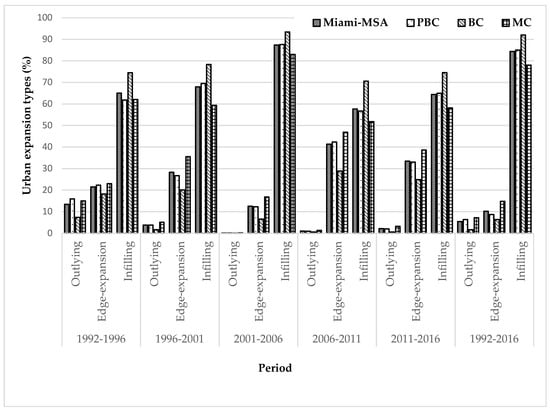Quantifying Spatiotemporal Patterns and Major Explanatory Factors of Urban Expansion in Miami Metropolitan Area During 1992–2016
Abstract
Share and Cite
Rifat, S.A.A.; Liu, W. Quantifying Spatiotemporal Patterns and Major Explanatory Factors of Urban Expansion in Miami Metropolitan Area During 1992–2016. Remote Sens. 2019, 11, 2493. https://doi.org/10.3390/rs11212493
Rifat SAA, Liu W. Quantifying Spatiotemporal Patterns and Major Explanatory Factors of Urban Expansion in Miami Metropolitan Area During 1992–2016. Remote Sensing. 2019; 11(21):2493. https://doi.org/10.3390/rs11212493
Chicago/Turabian StyleRifat, Shaikh Abdullah Al, and Weibo Liu. 2019. "Quantifying Spatiotemporal Patterns and Major Explanatory Factors of Urban Expansion in Miami Metropolitan Area During 1992–2016" Remote Sensing 11, no. 21: 2493. https://doi.org/10.3390/rs11212493
APA StyleRifat, S. A. A., & Liu, W. (2019). Quantifying Spatiotemporal Patterns and Major Explanatory Factors of Urban Expansion in Miami Metropolitan Area During 1992–2016. Remote Sensing, 11(21), 2493. https://doi.org/10.3390/rs11212493





